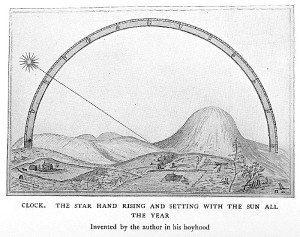On 15 March 1913, John Muir’s ‘The Story of My Boyhood and Youth’ was published by Houghton Mifflin, Boston and New York. It has constantly been available in the 100 years since. It tells of his early years in Dunbar and then, from ages 11 to 22, of growing up in the wonderful Wisconsin countryside. His love of nature, awakened in East Lothian, was nurtured in Marquette County and inspired him to change the world’s view of wild places.
Today’s quote
In those early days, long before the great labor-saving machines came to our help, almost everything connected with wheat-raising abounded in trying work, – cradling in the long, sweaty dog-days, raking and binding, stacking, thrashing, – and it often seemed to me that our fierce, over-industrious way of getting the grain from the ground was too closely connected with grave-digging. The staff of life, naturally beautiful, oftentimes suggested the gravedigger’s spade. Men and boys, and in those days even women and girls, were cut down while cutting the wheat. The fat folk grew lean and the lean leaner, while the rosy cheeks brought from Scotland and other cool countries across the sea faded to yellow like the wheat. We were all made slaves through the vice of over-industry…

